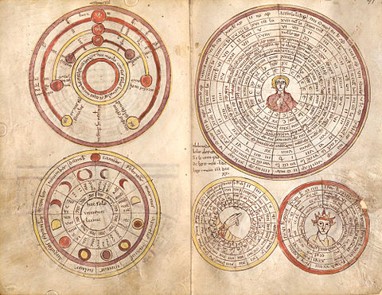An Introduction
Aside from the monthly lunar cycle created by the dance of the Sun and Moon around the Earth, we also experience six monthly soli-lunar cycles. These are usually set in motion by solar eclipses, which occur roughly twice a year, and always at new moon. Given how much of an influence these tend to have on the collective, I thought it a good idea to look a little closer at this strange phenomenon, the astrological interpretations of their potential impact, as well as provide tips on how to survive them.
According to astrological lore, eclipses are normally associated with periods of personal and social upheaval – an idea that originated with the ancient Mesopotamians who ‘invented’ astrology. Eclipse omens, based on the position, type, colour etc. of a particular event, are some of the earliest forms of astral divination found in the historical records. In fact, eclipse omen lore predates many of the current practices involved in modern astrology. See the ‘Astrology & History’ section below for more information.
What is an Eclipse?

An eclipse occurs when one celestial object passes into the shadow cast by another. This is known as an occultation and can occur between many different planets – not just the sun or moon. Astrologically speaking, though, we generally refer only to two kinds of eclipses – lunar and solar.
A solar eclipse occurs when the moon passes in front of the sun and obscures it totally or partially. This configuration can only exist at the time of the New Moon, when the sun, moon and earth are in a single line, with the moon on the same side of the earth as the sun. A lunar eclipse, on the other hand, occurs at Full Moon when the sun casts a shadow over the moon, partially or totally blocking out its light. At New Moon, the Sun and Moon always form a conjunction, whilst at Full Moon, the Sun and Moon are always in opposition.
Some eclipses are partial; and some, total, depending on the angle of the sun, moon and earth in relation to each other, which will therefore affect the angle of the shadow cast and how much of the heavenly body is ultimately obscured. This is often reflected in the position of the lunar nodes, which actually represent the positions where the path of the sun and moon intersect.

According to NASA, strange occurrences have been observed in nature during eclipses. The light filtering through leaves on trees casts crescent shadows, birds often prepare for sleep and animals behave confusedly at this time. Plant sap has been found to rise significantly and local temperatures have been known to drop 20 degrees or more near totality. The effect on humans is less noticeable but is no less powerful. People can become more emotional and act erratically. Strange events such as earthquakes also have a habit of occurring close to or on eclipse dates. Scientists are now conducting research into the link between luni-solar alignments, solar eclipses in particular, and their possible connection to earthquake activity and prediction.[i]
Eclipse Families – Saros Cycles
Eclipses occur in cycles of 18 years or so. This is based on the time it takes for the Moon to complete one entire circuit around its orbital plane. However, these eclipses also belong to a larger series or family which tends to run for over 1000 years (usually 1300 years) or so in what is known as a Saros Cycle. It was the Babylonians who first discovered this pattern and the Greeks who coined the term from “saros” which means “repetition”. Each Saros series starts at one of the two poles and then slowly moves either north or south across the path of the sun (ecliptic) until it reaches the other pole where it slowly dies out – too far from the ecliptic to cast any shadows. Several eclipse series’ will often run concurrently, each family ‘giving birth’ to approximately 72 eclipse events every 18 years.

In astrological terms, these Saros cycles have been linked by certain astrologers such as Bernadette Brady to different astrological and historical themes, based on the planetary configurations and mundane events happening at around the time when the first eclipse in the series occurred.[ii]
Read more – Eclipses & History.
References
[i] See for example, Predictive Astrology – The Eagle and the Lark by Bernadette Brady (Paperback, Samuel Weiser, USA 1999, 367 pages.)
[ii] See, for example, this journal article: Ejeta, M. (2011) Observed Association between Historical Major Earthquakes and Lunisolar Alignments. World Environmental and Water Resources Congress 2011, pp. 4288-4294. URL: http://dx.doi.org/10.1061/41173(414)445

